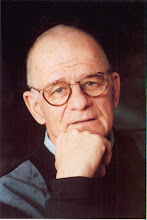Is P&G Cranking the Compensation Screw Too Tight?
P&G, which is known as one of the best clients to have in terms of longevity and marketing rigor, has over the last decade been moving from the commission-based compensation to a fee-for-service model. Now it has come up with a new hybrid system which, though well intentioned, is sure to frustrate everyone –- especially those who were applauding as P&G under former chairman A.G. Lafley began to foster creativity and innovation in the making of more effective brand connections with consumers.
Beginning this summer, and perhaps in some cases earlier than that, P&G has begun to assemble all its roster companies on a particular brand for internal pitches. In the past, the “winning” firm got to roll out its own idea and got bonused for its creative thinking. But that’s no longer the case.
Under a new system denoted with the shorthand BAL (Brand Agency Leader), all roster agencies will get paid an hourly rate for their work for P&G. Then, in a creative scrum, they are given a problem and everyone posits ideas for the brand. The ideas become P&G’s intellectual property. The brand then can ask any of its “vendor” entities to become a BAL and lead the others to insure that the idea is translated into effective brand communications. And all participating roster agencies have the opportunity to receive a small bonus of 5% to 10% based on whether the brand increases sales and market share down the line.
“[Agencies] are more accountable now,” P&G finance director Rich DelCore told Bloomberg news service last April. “It’s about total consumer engagement and brand building.”
Well BAL certainly is a way of fostering team spirit and, you could argue, it’s just creative collaboration on a grand scale. But it strikes me that P&G, which at $8 billion now has the largest annual marketing budget for any company in the U.S., is really creating a system that prices creative thinking as a commodity. And it’s a system that is not only unfair to the different players but bound to fail.
Advertising and intellectual property lawyer Rick Kurnit, of the New York’s Frankfurt Kurnit Klein & Selz PC, believes that this new system merely reinforces the myth that brilliant creative and strategic thinking can be purchased on an hourly basis.
P&G has already ratcheted down its “retainer” payment to agencies of from 15% (of mediaspend) of yore to a reported 8.5% equivalent today. And it can be assumed that procurement officers will ratchet that fee even lower if agencies agree to stay in the game.
As for collaboration, everyone is teaching this today. But by collaboration trainers in creative thinking mean that people should work on problems as teams and not fight with each other for mediaspend and revenue.
But it’s never been proposed that brands should be blind to who was coming up with the best ideas. At collaboration training sessions, teams are given a brand problem. They retire and return, and the team with the best solution is recognized as the “winner.”
It’s bad enough that brands won’t allow their different elements retain ownership of the intellectual property (IP) of what they devise—based on the argument that they are working “on the client’s clock.”
But in the new P&G model, agencies will only be rewarded minimally for winning ideas. “For the key people who make a difference in creative thinking and strategic thinking to get an extra 5% of profit margin for the agency does not reward them or the agency sufficiently,” says Kurnit. “These kind of stars need to be brought up to a competitive level with other creative endeavors or they’re going to leave the business.”
P&G has over the years consolidated its advertising from a roster of many shops down to a few global networks, basically Saatchi & Saatchi, Grey and Leo Burnett. These networks can’t afford to stay around for skimpy retainers. When their ideas do prevail they expect and deserve not only ample rewards but enough longevity to assure that their early efforts for a brand compensate for their investment.
We are still waiting for a model that pays an agency a premium for great ideas and still gives roster agencies the security and fair payment they need for maintaining manpower and overheads to be great.
What are these great ideas worth? “A man will turn over half a library to write one book,” said Samuel Johnson. P&G may have to pay “half a library” just to get one very powerful, enduring idea—but whatever it takes to launch and sustain brands over time it is worth it.

